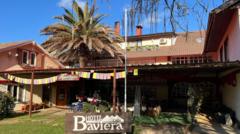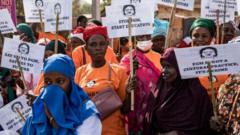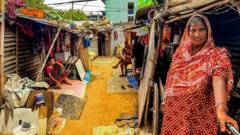The story of Villa Baviera—formerly Colonia Dignidad—highlights the struggle between remembrance and the need for healing as the Chilean government aims to honor victims of political repression.
**Villa Baviera: From Tourist Haven to Site of Remembrance for Pinochet's Victims**

**Villa Baviera: From Tourist Haven to Site of Remembrance for Pinochet's Victims**
Once a charming tourist spot, Villa Baviera must confront its painful history as Chile plans to transform it into a memorial.
Despite the picturesque German-style architecture and quaint ambiance, Villa Baviera in central Chile is haunted by a dark legacy. Originally established as Colonia Dignidad in 1961 by the duplicitous leader Paul Schäfer, this village concealed a trove of horrors, including child abuse and torture. Schäfer enforced a brutal regime, manipulating residents and violently separating children from their families to serve his sinister agenda.
The village assumed a more notorious role during Augusto Pinochet's military dictatorship when political adversaries were ruthlessly tortured within its walls, often never to emerge again. Following Schäfer's death in 2010, some German residents sought to redefine the site as a tourist destination, featuring recreational spaces and lodging.
However, the Chilean government intends to assign parts of the site for the commemoration of Pinochet's victims, a plan that has ignited significant debate among residents and survivors. Historical records indicate that thousands were killed or tortured under Pinochet's regime, with many believed to have met their fate in Colonia Dignidad.
The Aguayo family is a testament to the countless individuals affected; Luis Evangelista Aguayo was forcibly taken to the colony in 1973 and disappeared without a trace. His sister Ana recalls the family's relentless search for him, emphasizing the emotional scars that linger even decades later. "It was a place of horror and appalling crimes. It ought to be a place for remembrance, reflection, and for educating future generations," she insisted, supporting the government's plans.
Yet, this sentiment isn't universal among residents. Dorothee Munch, who spent her childhood in the colony, argues that expropriating their homes feels like a second victimization, especially for those who still wish to reclaim their narratives and rebuild their lives within the village.
The government’s initiative involves seizing 117 hectares of the site to create memorial spaces, including areas where the most atrocious acts took place. Some former residents, like Georg Klaube, support the formation of a memorial, recognizing the need to remember the brutal history that unfolded where they once played.
As discussions around the memorialization proceed, they evoke a poignant conflict: how to balance the necessity of remembering the suffering endured against the desire for healing and reconciliation. The Chilean Minister of Justice emphasizes the importance of preserving these historical truths, asserting that public access to these sites will ensure the retention of collective memory.
With ongoing judicial investigations into the historical violence and a collective call for transparency, Villa Baviera's evolution remains a complex narrative of memory, trauma, and identity for those who once called it home.
The village assumed a more notorious role during Augusto Pinochet's military dictatorship when political adversaries were ruthlessly tortured within its walls, often never to emerge again. Following Schäfer's death in 2010, some German residents sought to redefine the site as a tourist destination, featuring recreational spaces and lodging.
However, the Chilean government intends to assign parts of the site for the commemoration of Pinochet's victims, a plan that has ignited significant debate among residents and survivors. Historical records indicate that thousands were killed or tortured under Pinochet's regime, with many believed to have met their fate in Colonia Dignidad.
The Aguayo family is a testament to the countless individuals affected; Luis Evangelista Aguayo was forcibly taken to the colony in 1973 and disappeared without a trace. His sister Ana recalls the family's relentless search for him, emphasizing the emotional scars that linger even decades later. "It was a place of horror and appalling crimes. It ought to be a place for remembrance, reflection, and for educating future generations," she insisted, supporting the government's plans.
Yet, this sentiment isn't universal among residents. Dorothee Munch, who spent her childhood in the colony, argues that expropriating their homes feels like a second victimization, especially for those who still wish to reclaim their narratives and rebuild their lives within the village.
The government’s initiative involves seizing 117 hectares of the site to create memorial spaces, including areas where the most atrocious acts took place. Some former residents, like Georg Klaube, support the formation of a memorial, recognizing the need to remember the brutal history that unfolded where they once played.
As discussions around the memorialization proceed, they evoke a poignant conflict: how to balance the necessity of remembering the suffering endured against the desire for healing and reconciliation. The Chilean Minister of Justice emphasizes the importance of preserving these historical truths, asserting that public access to these sites will ensure the retention of collective memory.
With ongoing judicial investigations into the historical violence and a collective call for transparency, Villa Baviera's evolution remains a complex narrative of memory, trauma, and identity for those who once called it home.

















